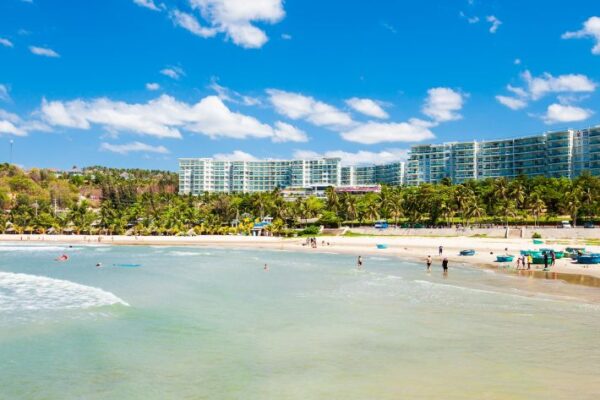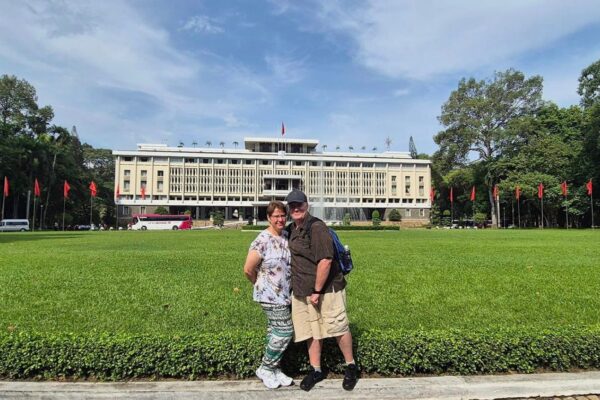The Difference Between Hanoi and Ho Chi Minh City: Unveil The Captivating Souls Of Vietnam
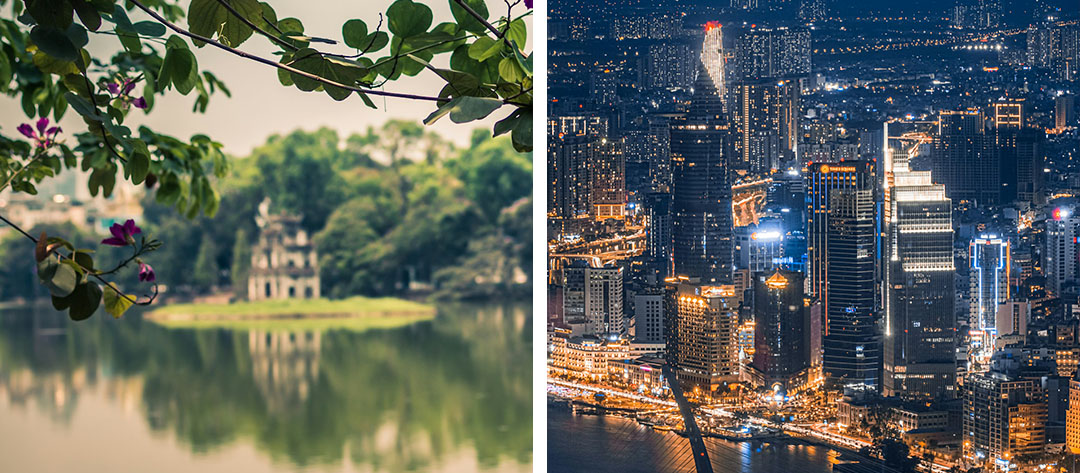
Vietnam, a country of breathtaking landscapes and profound history, is often defined by its two major cities: Hanoi in the north and Ho Chi Minh City in the south. To say they are merely different is an understatement; they are two distinct worlds, each offering a unique and unforgettable travel experience. The fundamental difference between Hanoi and Ho Chi Minh lies not just in their geography, but in their history, culture, pace of life, and even the flavors that grace their food stalls.
Hanoi, the thousand-year-old capital, exudes a timeless, poetic charm, its streets echoing with stories of dynasties and colonial eras. In contrast, Ho Chi Minh City, still affectionately called Saigon by many, is a whirlwind of commerce and energy, a city that looks firmly towards the future while carrying the vibrant spirit of its more recent, dramatic past. This guide will delve deep into these differences, helping you, the first-time traveler, to choose the city that resonates most with your travel style.
The Northern Charm vs. The Southern Buzz
The very atmosphere of these two cities tells a story of their divergent paths. This palpable difference between Hanoi and Ho Chi Minh City is the first thing a traveler will notice.
Hanoi: The Poetic Capital of a Thousand Years

Long Bien Brigde in Hanoi
Step into Hanoi, and you step into a living museum. The city’s heart, the Old Quarter, is a labyrinth of 36 streets, each historically dedicated to a specific craft. Here, time seems to slow down. Mornings begin at a leisurely pace, with locals practicing Tai Chi by the serene Hoan Kiem Lake around 05:30.
The air is filled with the scent of brewing coffee and the gentle hum of bicycles and cyclos navigating the narrow alleyways. French colonial architecture, with its grand facades and shuttered windows, stands in elegant conversation with ancient pagodas and temples. There’s a palpable sense of tradition and a reverence for the past.
The city is the political and cultural nucleus of Vietnam, and this is reflected in its more reserved and traditional character. Life is more measured, with many shops closing by 22:00, inviting a more relaxed evening culture centered around quiet cafes and intimate conversations.
>> Read More: How To Make The Most Out Of One Week In Hanoi?
Ho Chi Minh City: The Electric Southern Metropolis

A vibrant slice of Saigon from above
In stark contrast, Ho Chi Minh City is a symphony of organized chaos. The moment you arrive, the city’s energy is infectious. Rivers of motorbikes flow through wide, modern boulevards, flanked by gleaming skyscrapers that pierce the tropical sky. This is Vietnam’s economic powerhouse, a city that never seems to sleep. The pace is relentless, the atmosphere vibrant and cosmopolitan.
While historical landmarks like the Reunification Palace and the War Remnants Museum offer powerful glimpses into its past, the city’s gaze is fixed on progress and innovation. The nightlife is legendary, with rooftop bars offering panoramic city views until the early hours, and a palpable sense of optimism and dynamism permeates every district. The people of Saigon are known for their directness, openness, and entrepreneurial spirit, a reflection of the city’s history as a major trading port.
>> Read More: Top 20 Fun Things to Do in Ho Chi Minh City: A Local’s Guide
The Flavourful Difference Between Hanoi and Ho Chi Minh
Both cities offer unique gastronomic experiences that not only satisfy the palate but also tell the story of Vietnam’s rich cultural heritage.
Hanoi’s Subtle and Refined Flavors
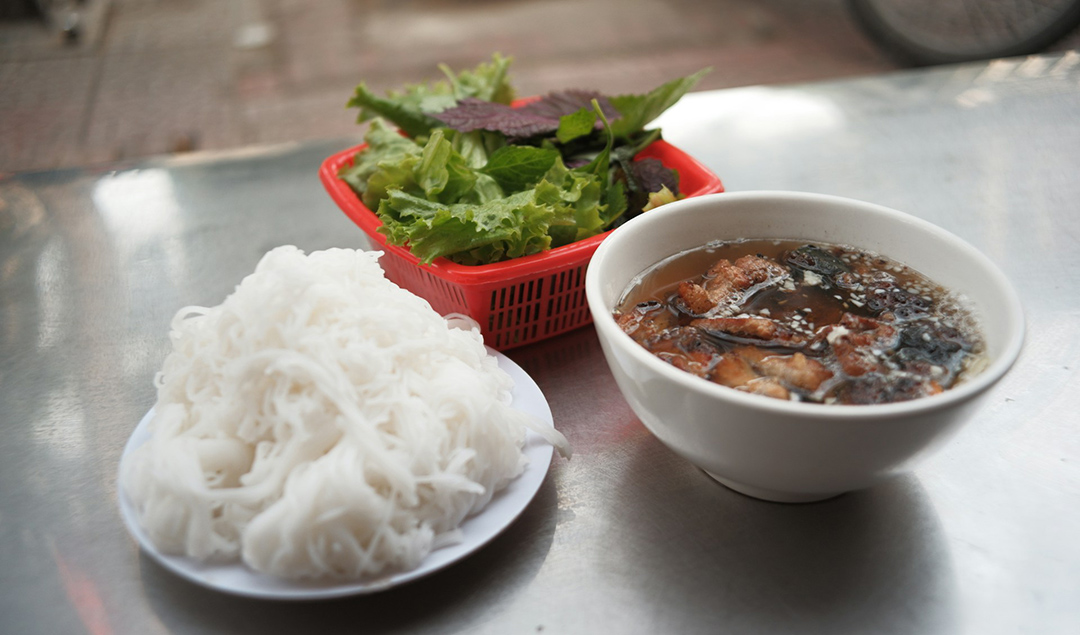
Bun Cha – The typical local cuisine in Hanoi
Northern Vietnamese cuisine, with Hanoi at its epicenter, is often considered more traditional and refined. The flavors are subtle and balanced, with a focus on fresh, locally sourced ingredients. The iconic dish, pho, is a must-try.
In Hanoi, you’ll find pho bac, the original version, characterized by a clear, delicate broth, wider rice noodles, and a simple garnish of green onions, cilantro, and a squeeze of lime. Other Hanoian specialties include bun cha (grilled pork with rice vermicelli), a favorite of former President Barack Obama, and cha ca la vong (grilled fish with dill and turmeric).
Hanoian food is less spicy than its southern counterpart, with a greater emphasis on the harmony of flavors. A meal here can be an education in the art of subtlety, often enjoyed on small plastic stools in a bustling market alley, perhaps for as little as $2.00 – $3.00 USD per dish.
>> Read More: Best Recommendations For An Authentic Food Tour In Hanoi
Ho Chi Minh City’s Bold and Diverse Cuisine
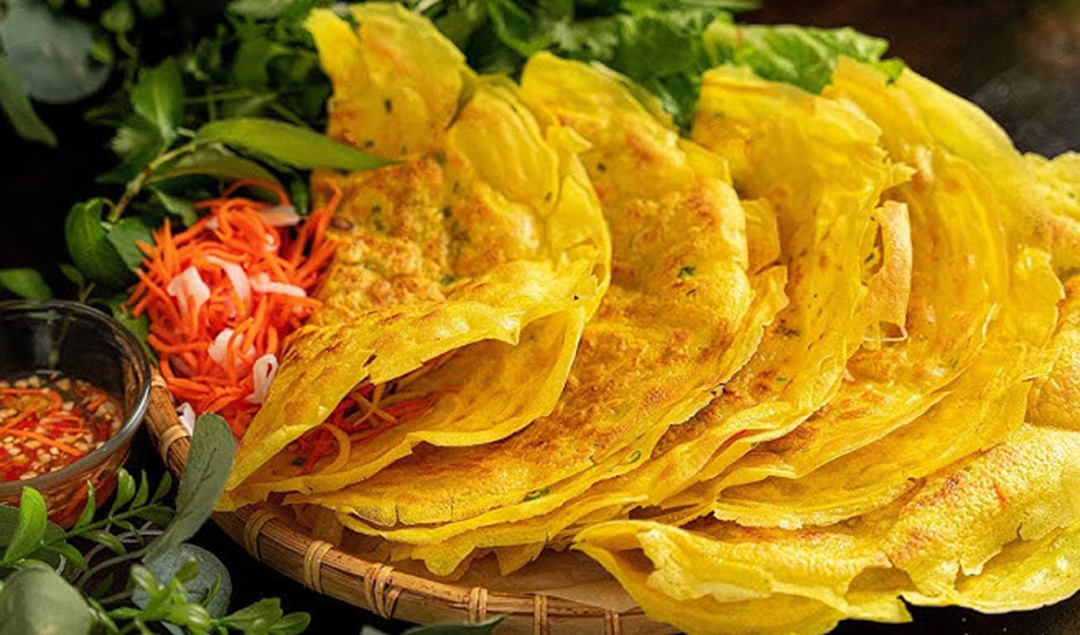
You might love Banh Xeo in Ho Chi Minh City
Southern Vietnamese cuisine is a vibrant tapestry of flavors, influenced by Cambodian, Thai, and Chinese culinary traditions. The food in Ho Chi Minh City is generally sweeter and bolder. The southern version of pho, pho nam, features a richer, more complex broth, often with the addition of herbs like basil and bean sprouts, and a wider array of sauces on the table, including hoisin and chili sauce.
The city is a street food paradise, with an endless variety of dishes to sample. Don’t miss com tam (broken rice with grilled pork, a steamed egg cake, and pickled vegetables), a quintessential Saigon breakfast. Banh xeo, a crispy, savory pancake filled with pork, shrimp, and bean sprouts, is another southern delight. The use of coconut milk, chili, and a wider range of fresh herbs gives southern cuisine its characteristic punch. You can expect to find a delicious and filling street food meal for a similar price range of $2.00 – $4.00 USD.
>> See Tour: A Food Lover’s Tour of Vietnam
Weathering the Difference: Climate Considerations
The geographical separation of the two cities results in a significant difference between Hanoi and Ho Chi Minh when it comes to climate, a crucial factor in planning your trip.
Hanoi’s Four Distinct Seasons
Hanoi experiences a subtropical climate with four distinct seasons.
- Spring (February to April): Pleasant and mild, with average temperatures ranging from 20°C to 25°C. This is an ideal time to visit, with flowers in bloom and clear skies.
- Summer (May to August): Hot and humid, with temperatures often soaring above 35°C and frequent heavy rainfall.
- Autumn (September to November): Considered the most beautiful season, with cool, dry weather and average temperatures between 25°C and 28°C.
- Winter (December to January): Cool and often overcast, with temperatures dropping to as low as 10°C. You’ll need to pack a jacket during these months.
Ho Chi Minh City’s Tropical Climate
Ho Chi Minh City has a tropical climate with two main seasons.
- Dry Season (December to April): Hot and sunny, with average temperatures around 28°C to 35°C. This is the peak tourist season.
- Rainy Season (May to November): Characterized by high humidity and short, heavy downpours, usually in the afternoon. The city remains warm, with temperatures hovering around 25°C to 32°C. The rain rarely lasts all day, so it’s still a viable time to visit.
>> Read More: Best Time To Visit Vietnam
Exploring the Past: Historical and Cultural Landmarks
Both Hanoi and Ho Chi Minh City boast a wealth of history, but they offer distinct narratives and landmarks that highlight their unique cultural identities.
Hanoi’s Ancient and Colonial Heritage
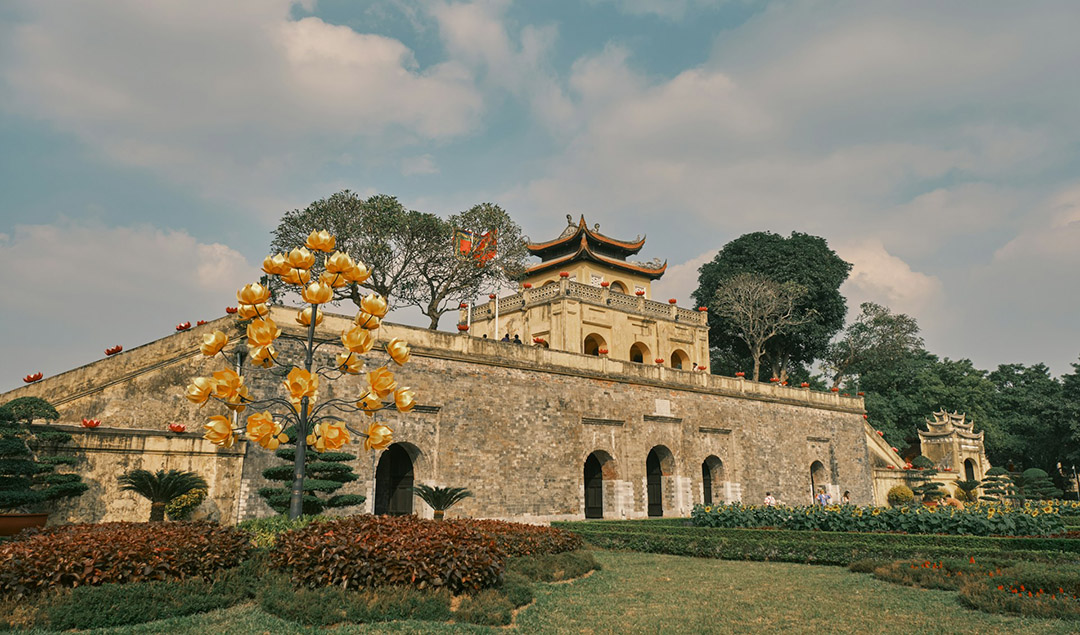
Thang Long Imperial Citadel
Hanoi is a treasure trove of historical sites that span over a millennium.
- The Temple of Literature, Vietnam’s first university, founded in 1070, is a stunning example of traditional Vietnamese architecture.
- The Ho Chi Minh Mausoleum, a monumental structure in Ba Dinh Square, is a place of pilgrimage for many Vietnamese.
- The Vietnam Museum of Ethnology offers a fascinating insight into the country’s 54 ethnic groups.
- The Hoa Lo Prison, sarcastically nicknamed the “Hanoi Hilton” by American prisoners of war, provides a sobering look into Vietnam’s long struggle for independence.
- The Old Quarter itself is a living historical artifact, where centuries of commerce and daily life are etched into the very fabric of the streets.
>> Explore More: A Guide to 6 Iconic Historical Sites in Vietnam
Ho Chi Minh City’s Modern History and War Remnants
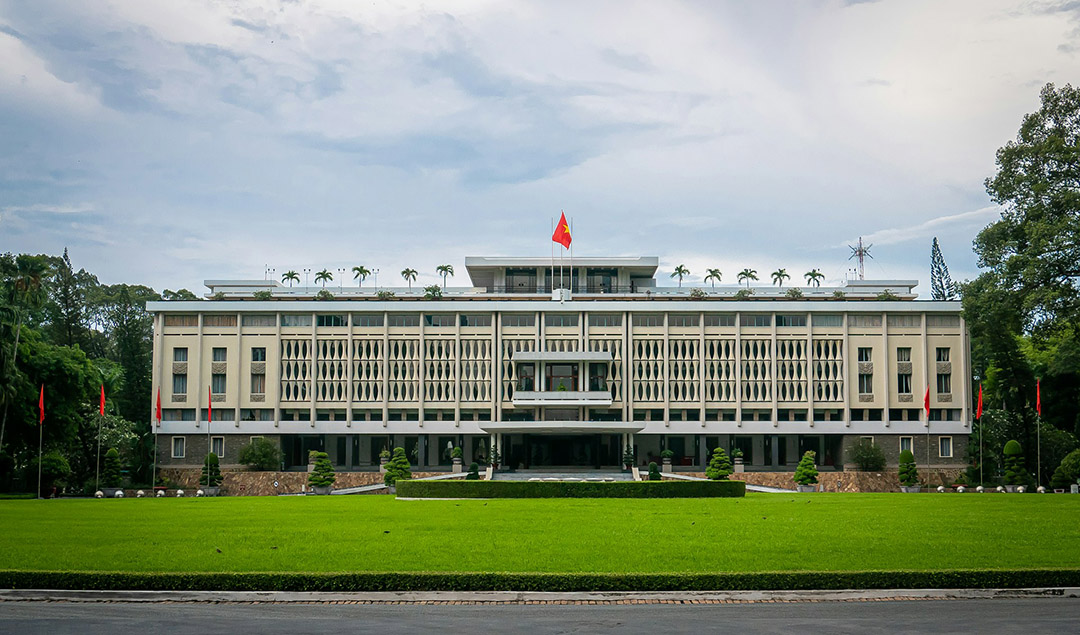
The Reunification Palace
Ho Chi Minh City’s historical landmarks are more focused on its recent past, particularly the Vietnam War.
- The War Remnants Museum offers a powerful, and at times harrowing, perspective on the conflict.
- The Reunification Palace, formerly the Presidential Palace of South Vietnam, is a fascinating time capsule of 1960s and 70s architecture and political history.
- The Cu Chi Tunnels, a short drive from the city, provide a visceral understanding of the ingenuity and resilience of the Viet Cong soldiers.
Beyond the war-related sites, the city also boasts beautiful French colonial buildings like the Notre Dame Cathedral and the Central Post Office, designed by Gustave Eiffel.
>> Read More: Explore These 14 Vietnam Historical Landmarks To Learn About The Country’s Intriguing Past
After Dark: The Nightlife Divide
As the sun dips below the horizon, the distinct difference between Hanoi and Ho Chi Minh City becomes increasingly evident.
Hanoi’s Laid-Back Evenings
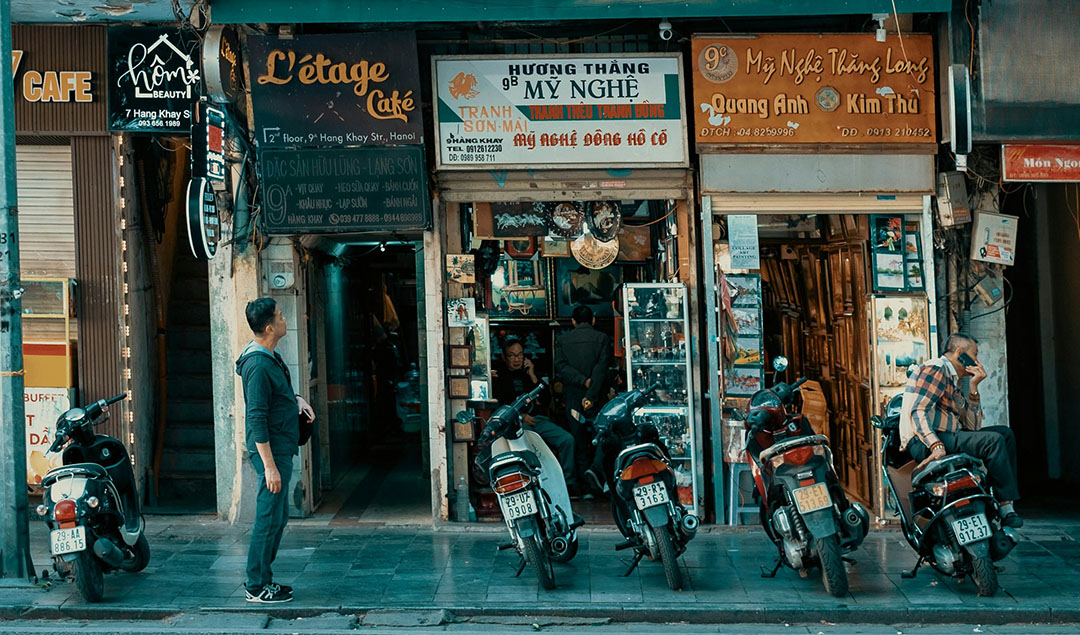
Time slows down on a Hanoi sidewalk
Hanoi’s nightlife is more subdued and intimate. The “Bia Hoi” corners in the Old Quarter are a quintessential Hanoian experience, where locals and travelers gather on plastic stools to drink fresh, light draft beer for a mere $0.50 USD a glass. The area around Hoan Kiem Lake is beautifully illuminated at night, perfect for a leisurely stroll. While there are a number of bars and clubs, especially in the Tay Ho (West Lake) district, the overall vibe is more relaxed.
The city officially has a midnight curfew, though some establishments may stay open later. Expect live music venues and cozy pubs rather than sprawling, high-energy nightclubs.
Ho Chi Minh City’s All-Night Party
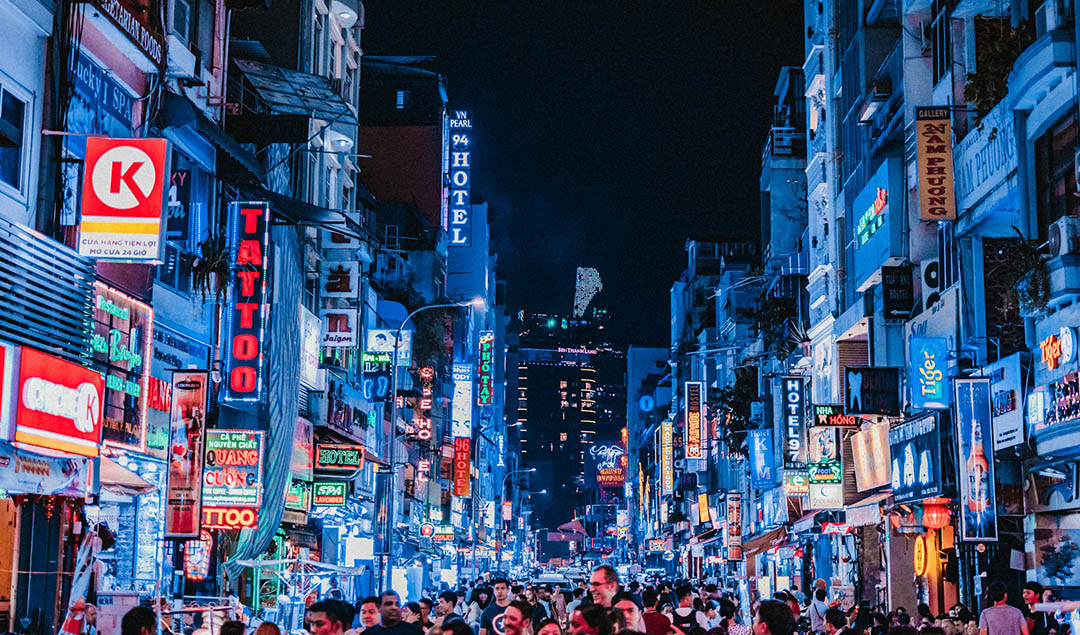
Modern energy lights up the city’s night
Ho Chi Minh City is a city that loves to party. The nightlife is energetic, diverse, and continues well into the early hours of the morning.
Bui Vien Street in District 1 is the city’s infamous backpacker hub, a vibrant chaos of neon lights, loud music, and cheap drinks. For a more sophisticated experience, head to one of the many chic rooftop bars that offer stunning views of the city’s glittering skyline.
The city is home to a thriving craft beer scene, with numerous microbreweries offering a wide range of innovative brews. From underground clubs to lavish lounges, Saigon’s nightlife caters to every taste and budget.
>> See Tour: Classic Vietnam Tour – Ho Chi Minh City to Hanoi
Final Words: Two Cities, One Unforgettable Journey
Vietnam is a country of contrasts, where tradition meets transformation, and serenity dances with speed. These two cities are not rivals, but the difference between Hanoi and Ho Chi Minh pulses that shape the nation’s soul. Hanoi charms with its quiet lakes, rich history, and contemplative pace. Ho Chi Minh City (Saigon), on the other hand, is energized by its rapid rhythm, sky-piercing towers, and boundless ambition.
Whether you’re drawn to Hanoi’s poetic nostalgia or Saigon’s bold innovation, experiencing both offers the most complete portrait of Vietnam’s identity. And the best part? You don’t have to choose—because each city complements the other in the most unexpected ways.
Ready to uncover the magic of both Hanoi and Ho Chi Minh City? Let our amazing travel designers craft your tailor-made Vietnam journey—seamless, personal, and unforgettable from the north to the south. Plan your Vietnam adventure now with Asia Pioneer Travel.


